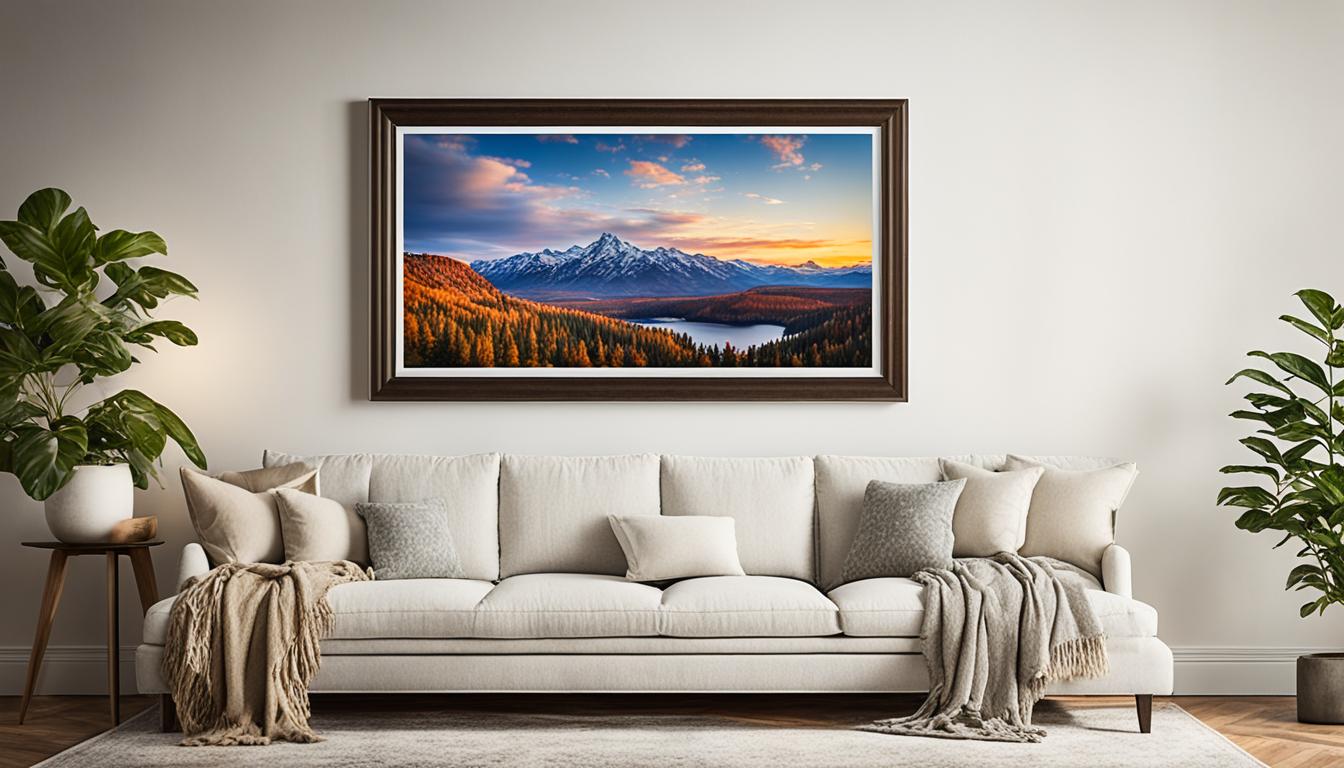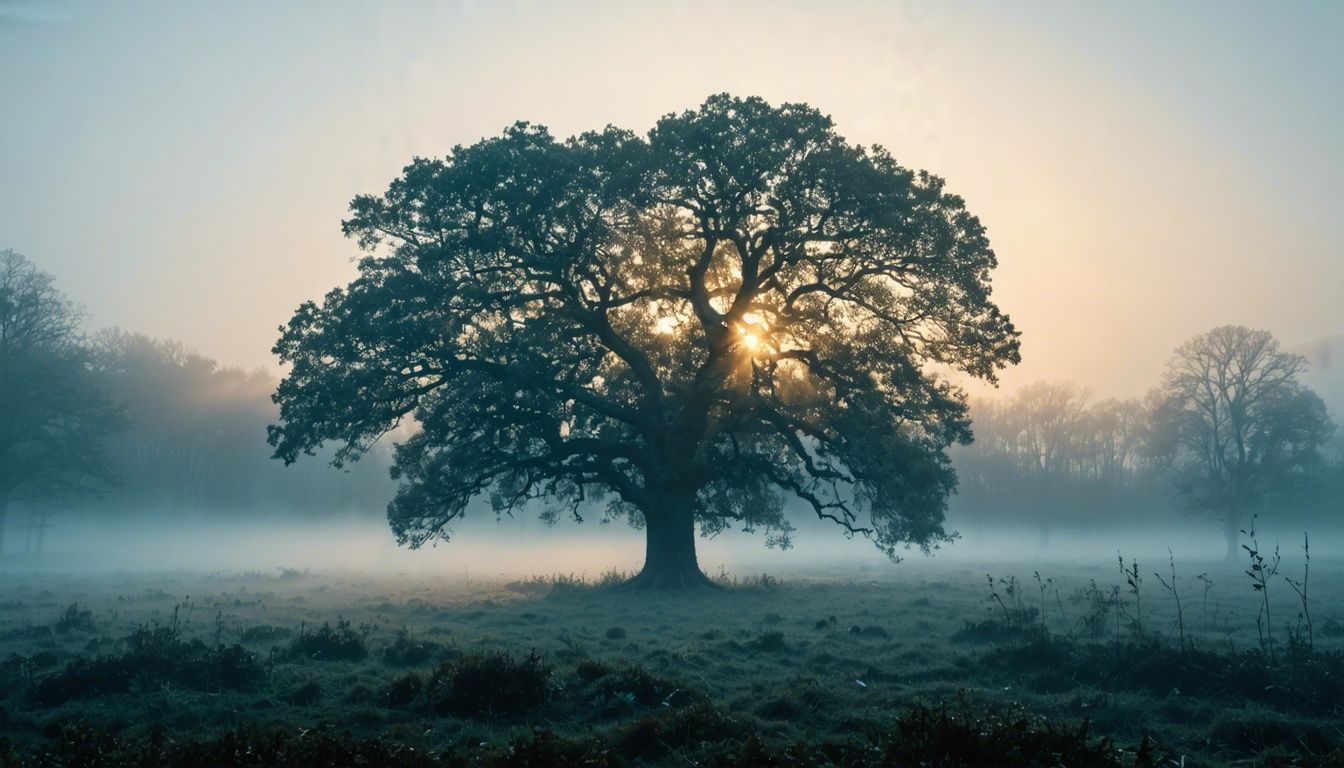Presenting and exhibiting fine art photography is an opportunity to share your work with a more attentive and appreciative audience. It strengthens your reputation and allows your work to be seen and appreciated in person. This guide will provide key considerations for curating your exhibit, writing your artist statement, choosing the right venue, budgeting for expenses, and pricing your work.
Key Takeaways:
- Curate your fine art exhibit by creating a cohesive collection that tells a story and writing an artist statement to express your artistic vision.
- Consider participating in a group art show to gain exposure and sharing expenses, or hold a solo exhibit for a prestigious showcase of your work.
- Explore non-traditional spaces like libraries, community centers, and cafes, or consider artist-run galleries or commercial galleries for your exhibit.
- Plan and budget for expenses such as printing, framing, gallery fees, insurance, and allocate time for the exhibition process.
- Choose framing treatments that complement your work while considering costs, and arrange your pieces to tell a cohesive story.
Curating Your Fine Art Exhibit
Curating your own fine art exhibit can be a challenging yet rewarding experience. It gives you the opportunity to showcase your personal vision and connect with your audience in a meaningful way. In this section, we will explore the crucial steps involved in curating your fine art exhibit.
Gathering and Grouping Your Photographic Collection
Start the curating process by spreading out your photographs on a table or a digital platform. Take your time playing with different groupings and arrangements, paying attention to the visual flow and narrative that emerges.
Remove any weaker or redundant images that don’t contribute to the overall story or theme you want to convey. Focus on selecting a cohesive collection that showcases your artistic vision.
“Curating is about making choices, and those choices should reflect your unique voice as an artist. Concentrate on presenting a set of images that resonate with each other and enhance the viewer’s experience.”
Developing Your Artist Statement
Writing an artist statement is an essential part of curating your exhibit. It provides insight into your creative process, influences, and the intention behind your work. Your artist statement helps viewers understand your artistic vision and enhances their appreciation of your photographs.
When crafting your statement, consider the emotions, concepts, or ideas you want to communicate through your work. Share your inspirations and the themes that drive your artistic practice. Keep it concise and engaging, allowing the viewer to connect with your photographs on a deeper level.
Creating a Cohesive Narrative
A successful curated exhibit tells a story and takes the viewer on a visual journey. Look for ways to create connections and transitions between your images, emphasizing the themes or motifs that run through your collection.
Consider the flow of your exhibit, arranging the photographs in a way that enhances the narrative you want to convey. Experiment with different sequencing techniques, such as contrasting or complementary visuals, to create a captivating exhibition experience.
Remember, curating is an ongoing process. Continuously review and refine your collection and its presentation until you achieve the desired impact.
Curating your fine art exhibit allows you to share your unique perspective with the world. By carefully selecting and arranging your photographs, crafting an artist statement, and developing a cohesive narrative, you can create an exhibit that captivates and resonates with your audience.
Group or Solo Art Exhibition
When it comes to showcasing your fine art photography, you have two main options: participating in a group art show or holding a solo art exhibit. Each option offers its own unique benefits and considerations. Let’s explore both to help you make an informed decision.
Group Art Show
Participating in a group art show can be a valuable opportunity for emerging artists. It allows you to learn from experienced artists, share resources and expenses, and gain exposure to a larger audience. By showcasing your work alongside other talented artists, you can benefit from the collective presence and draw more attention to your photographs.
Group art shows typically involve multiple artists exhibiting their work together in a shared space. The expenses, such as venue rental and promotion, are divided among all participants, making it more affordable for individual artists. Additionally, the shared responsibilities can alleviate some of the pressures of organizing a solo exhibit.
By participating in a group art show, you can connect with like-minded artists, build relationships within the art community, and potentially attract the attention of critics, curators, and art enthusiasts.
Solo Art Exhibit
On the other hand, holding a solo art exhibit allows you to take center stage and present a cohesive body of work that reflects your artistic vision. It provides an opportunity to showcase your unique style, storytelling abilities, and creative growth.
A solo art exhibit offers a sense of prestige and professionalism, positioning you as a dedicated and serious artist. It allows you to dive deeper into your subject matter, explore different themes, and present your photographs in a curated and intentional way.
However, solo exhibits come with their own set of responsibilities. As the sole artist, you will be responsible for shouldering all the expenses, including venue rental, promotional materials, and installation costs. This can be costly and require careful budgeting and planning. But the payoff can be significant, as a successful solo exhibit can elevate your reputation and attract collectors and gallery owners.
Ultimately, the decision to participate in a group art show or hold a solo art exhibit depends on your goals, resources, and artistic aspirations. Consider your current stage as an artist, your desired level of exposure, and the financial implications when making this important decision.
Remember, whether you choose a group art show or a solo art exhibit, the key is to present your work in a professional and compelling manner. Prioritize the quality of your photographs, the coherence of your collection, and the engagement of your audience.

Choosing the Right Venue
When it comes to choosing the perfect venue for your fine art exhibit, there are various options to consider. Whether you prefer traditional spaces or are open to exploring alternative venues, each choice offers unique advantages and opportunities to showcase your work.
Non-traditional Spaces
Think beyond the conventional gallery settings and consider non-traditional spaces for your exhibit. Libraries, community centers, schools, and universities often have available wall space and are frequently open to hosting art exhibits. These venues offer a chance to reach a wider audience and engage with communities outside of traditional art circles.
Artist-run Galleries
Artist-run galleries provide artists with rental spaces and the freedom to curate and exhibit their work independently. These spaces may require the artist’s presence during the exhibit, allowing for direct interaction with visitors and the opportunity to share insights and stories behind your art. It’s a great option for artists seeking a more hands-on approach.
Commercial Galleries
Commercial galleries, on the other hand, offer a professional setting with established curators and staff who handle marketing and sales. While they have strict submission guidelines and deadlines, participating in a commercial gallery exhibit can provide invaluable exposure and access to art collectors and enthusiasts.
Cafes and Restaurants
In addition to formal gallery spaces, cafes and restaurants can serve as unique and vibrant venues for displaying your artwork. While patrons visiting these establishments may not be specifically there to purchase art, it offers an opportunity to expose your work to a diverse audience and spark conversations around your creations.
Consider the ambiance and compatibility of the venue with your art style and target audience. Each option presents its own set of benefits and considerations. Whether you choose a non-traditional space, an artist-run gallery, a commercial gallery, or a cafe/restaurant, ensure it aligns with your artistic vision and provides the right exhibition space for your fine art photography. Remember, the venue you choose plays a significant role in shaping the overall experience for your viewers.
Costs and Budgeting
Producing a fine art exhibit requires careful budgeting to ensure all expenses are accounted for. From printing and framing expenses to gallery fees and commissions, it’s essential to consider every aspect of the exhibition’s financial requirements. Additionally, insurance and the time commitment involved should be taken into account when planning your budget.
One of the major expenses to consider is printing and framing. High-quality prints are essential for showcasing your photography professionally. Ensure you budget for printing costs, whether you choose to do it yourself or hire a professional printing service. Framing, too, can be a significant expense. Custom frames provide a polished and unified look for your prints but can be more costly. If you’re on a budget, consider purchasing frame kits in uniform sizes to save on costs.
Gallery fees and commissions are common in the art world, as galleries often take a percentage of the sale price as a commission. When approaching galleries, make sure to inquire about their fees and commission rates. It’s crucial to understand these financial arrangements before committing to an exhibition. Additionally, read and understand any contracts associated with the gallery, clarifying the terms related to sales and commissions.
Insurance is another consideration when hosting a fine art exhibit, especially if it takes place in a public space. Protecting your work against any damage or theft is essential. Remember to budget for insurance coverage to provide peace of mind throughout the exhibition.
The time commitment required for producing a fine art exhibit should also be factored into your planning. Estimate the amount of time you’ll spend on various tasks such as printing, framing, curating the exhibition, and promoting the event. Setting realistic expectations for the time you’ll dedicate to the exhibit ensures you can balance your workload effectively and maintain the quality of your work.

To summarize, careful budgeting is crucial when planning a fine art exhibit. Consider factors such as printing and framing expenses, gallery fees and commissions, insurance, and the time commitment required. By accounting for these costs and planning accordingly, you can ensure a financially viable and successful exhibition.
Framing Your Fine Art Prints
Framing plays a crucial role in creating a professional and visually appealing exhibit for your fine art prints. The right framing treatment can enhance the presentation of your artwork and effectively convey your artistic vision. Whether you opt for custom framing or utilize framing kits, the goal is to create a cohesive and visually striking display.
Choosing the Perfect Framing Treatment
When selecting a framing treatment, consider how it complements your fine art prints and aligns with the overall aesthetic of your exhibit. Choose frames that enhance the colors, textures, and mood captured in your photographs. Additionally, the frame style and material should complement the subject matter and style of your prints.
Custom framing offers a polished and tailored look, ensuring a perfect fit for your fine art prints. With custom frames, you have the freedom to choose from a wide range of materials, finishes, and matting options, allowing you to customize the presentation to your liking. However, it’s important to be mindful of the associated costs, as custom framing can be more expensive than other framing options.
Exploring Framing Kits for Uniformity
If you’re working within a tighter budget, consider using framing kits that provide a convenient and cost-effective solution. Framing kits typically come in uniform sizes, making them ideal for framing multiple prints of the same dimensions. This uniformity creates a cohesive look and brings a sense of harmony to your exhibit. Additionally, framing kits often come with all the necessary hardware, saving you time and effort.
Telling a Cohesive Story with Framing Arrangements
When arranging framed prints for your exhibit, consider the narrative or theme you want to convey. The framing arrangements should follow a logical flow that guides viewers through a cohesive story or concept. Experiment with various layouts and arrangements to find the one that best complements your vision.
Offering Affordable Options with Smaller Matted Pieces
In addition to your main framed prints, consider offering smaller matted pieces that provide an affordable entry point for potential buyers. These smaller prints can be displayed alongside larger works or in a separate section, providing an accessible option for art enthusiasts who appreciate your work but prefer a more budget-friendly purchase.
In conclusion, framing plays a vital role in the presentation and impact of your fine art prints. By choosing the right framing treatment, arranging the frames thoughtfully, and offering a range of sizing options, you can create a visually stunning exhibit that captivates viewers and showcases your artistic talents. Remember to consider your budget and the overall theme of your exhibit as you make decisions about framing your fine art prints.
Conclusion
Presenting and exhibiting fine art photography is a rewarding experience that allows your work to be seen and appreciated by a dedicated audience. By carefully curating your exhibit, writing an artist statement that expresses your artistic vision, selecting the right venue, budgeting wisely, and framing your prints, you can create a successful exhibit that showcases your artistic journey.
Remember, the goal of exhibiting is not only to sell your art but also to share your unique vision with others and foster a deeper appreciation for fine art photography. Each exhibit is an opportunity to connect with art enthusiasts, engage in meaningful conversations, and leave a lasting impression on viewers.
As you embark on this exciting endeavor, remember to stay true to your creative voice and allow your work to speak for itself. Embrace the challenges and triumphs of the artist’s journey, knowing that each step forward brings you closer to achieving your artistic goals. Fine art photography exhibits are a powerful platform for self-expression and art appreciation, where your talent and passion can inspire and captivate a diverse audience.
FAQ
What is the importance of curating a fine art exhibit?
Curating your own fine art exhibit allows your personal vision to shine through and creates a cohesive collection that tells a story.
What should be included in an artist statement?
An artist statement should express the intention behind your work and help viewers understand your artistic vision.
What are the benefits of participating in a group art show?
Participating in a group art show allows for shared expenses and responsibilities among multiple artists and exposes your work to a larger audience.
What should I consider when choosing a venue for my exhibit?
Consider non-traditional spaces, artist-run galleries, and commercial galleries based on their available wall space, rental requirements, and marketing support.
What expenses should I budget for when producing a fine art exhibit?
Consider costs such as printing, framing, gallery fees, commissions, insurance, and estimate the time commitment required.
How should I frame my fine art prints?
Choose a framing treatment that complements your work and fits within your budget, considering custom framing or purchasing frame kits in a uniform size.
What is the goal of presenting and exhibiting fine art photography?
By presenting and exhibiting your fine art photography, you can share your vision with others, foster art appreciation, and potentially sell your work.
How Can Fine Art Photography Workshops Enhance Your Experience at Photography Exhibits?
Fine art photography workshops can greatly enhance your experience at photography exhibits by providing you with the knowledge and skills to better appreciate the artistry and technique behind the images on display. By learning from experts in the field, you can gain a deeper understanding and appreciation for the artwork.




